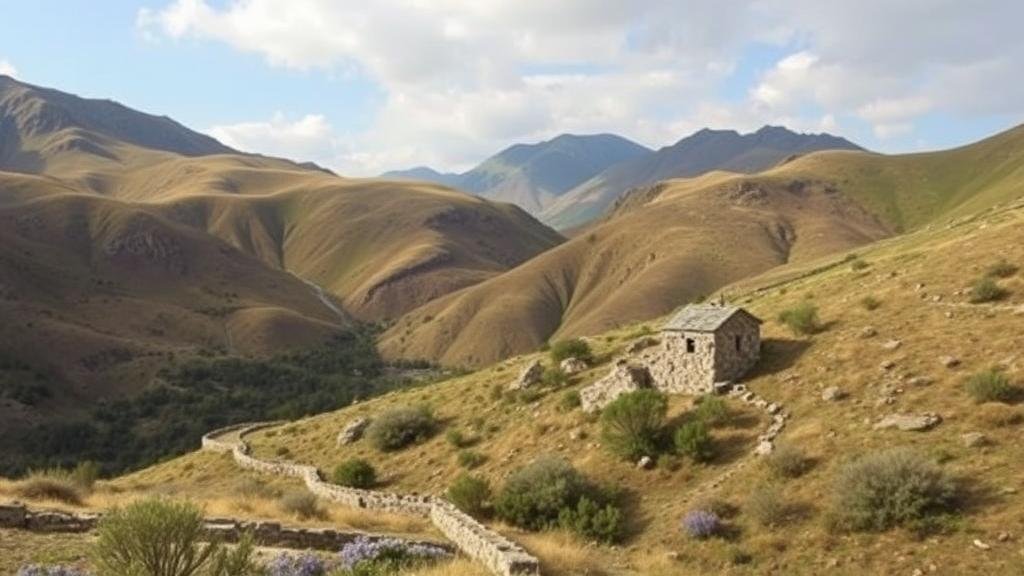Exploring remote valleys in the Caucasus Mountains for ancient proto-Georgian settlements.
Exploring Remote Valleys in the Caucasus Mountains for Ancient Proto-Georgian Settlements
The Caucasus Mountains, a natural barrier between Europe and Asia, are rich in history and culture, particularly in the region that is now modern-day Georgia. The remote valleys of this mountainous region have long been believed to be home to ancient proto-Georgian settlements. This article delves into the significance of these valleys, their archaeological importance, and the insights they offer into the early civilizations of this part of the world.
The Geographic Landscape of the Caucasus
The Caucasus Mountains stretch approximately 1,100 kilometers and are divided into the Greater and Lesser Caucasus ranges. This diverse landscape encompasses rugged peaks, deep gorges, and secluded valleys that have served as both natural fortifications and isolated havens for numerous cultures throughout history. Notably, valleys such as the Racha Valley and the Svaneti region harbor remnants of early settlements that date back to the Bronze Age.
Proto-Georgian Civilization: An Overview
Proto-Georgians are believed to have inhabited these valleys as early as the 6th century BCE. These early settlers made significant contributions to the cultural and linguistic foundations of the Georgian people. Evidence of their presence is found through pottery, tools, and other artifacts that illustrate their daily lives.
Significant Archaeological Sites
Several valleys within the Caucasus hold key archaeological sites that provide insights into proto-Georgian life. Some noteworthy areas include:
- Racha Valley: Renowned for its well-preserved archeological remains, the Racha Valley was a critical area for settlement. Excavations here have revealed pottery and burial mounds that suggest early agricultural practices.
- Svaneti Region: This highland area is home to distinctive medieval tower houses called Svan towers. Archaeological studies have uncovered artifacts indicating that Svaneti played a pivotal role in trade and cultural exchange between proto-Georgians and neighboring tribes.
- Vardzia Cave Monastery: Although primarily known for its later constructions, the caves have been linked to earlier settlements. The historical significance of Vardzia extends back to the 12th century, showcasing the continuity of habitation in the region.
Ancient Settlements: Everyday Life and Culture
Life in these ancient settlements revolved around agriculture, animal husbandry, and trade. The fertile valleys provided sustenance, while the mountainous terrain offered protection from invaders. Artifacts such as loom weights indicate that textiles played an integral role in proto-Georgian culture. Also, the discovery of bronze tools and weapons highlights their technological advancements.
Cultural Exchange and Influence
The Caucasus region was not only a crossroads for various ethnic groups but also a melting pot of cultures and traditions. Trade routes passing through these valleys facilitated the exchange of goods, ideas, and technologies. presence of golden artifacts, such as those found in the Trialeti kurgans, demonstrates interactions with other ancient civilizations, including the Greeks and the Persians.
Conclusion: Preserving History for Future Generations
Exploring the remote valleys of the Caucasus Mountains reveals a treasure trove of archaeological wonders that are crucial for understanding the origins of Georgian civilization. As these sites undergo continued exploration and preservation efforts, they provide valuable educational opportunities and deepen our appreciation for the rich tapestry of human history in this region.
Actionable Takeaways
- If you are interested in archaeology, consider planning an expedition to the Caucasus to witness these historic sites first-hand.
- Engage with local historians or archaeological societies to learn more about ongoing research and conservation efforts.
- Support heritage tourism initiatives that aim to preserve and promote the cultural significance of these ancient valleys.



